-
 Bitcoin
Bitcoin $84,258.9872
0.35% -
 Ethereum
Ethereum $1,590.5943
1.14% -
 Tether USDt
Tether USDt $0.9998
-0.02% -
 XRP
XRP $2.0990
1.26% -
 BNB
BNB $587.2456
1.30% -
 Solana
Solana $132.5296
6.11% -
 USDC
USDC $0.9999
0.00% -
 TRON
TRON $0.2483
-2.37% -
 Dogecoin
Dogecoin $0.1557
1.96% -
 Cardano
Cardano $0.6199
2.68% -
 UNUS SED LEO
UNUS SED LEO $9.1185
-2.93% -
 Chainlink
Chainlink $12.4572
2.80% -
 Avalanche
Avalanche $19.2046
1.97% -
 Toncoin
Toncoin $2.9568
3.52% -
 Stellar
Stellar $0.2397
2.14% -
 Shiba Inu
Shiba Inu $0.0...01181
1.81% -
 Sui
Sui $2.0961
0.90% -
 Hedera
Hedera $0.1602
2.15% -
 Bitcoin Cash
Bitcoin Cash $330.4313
4.06% -
 Polkadot
Polkadot $3.6278
3.32% -
 Litecoin
Litecoin $74.9638
1.65% -
 Hyperliquid
Hyperliquid $16.4916
8.27% -
 Dai
Dai $0.9999
-0.01% -
 Bitget Token
Bitget Token $4.3499
0.87% -
 Ethena USDe
Ethena USDe $0.9990
-0.03% -
 Pi
Pi $0.6068
-1.04% -
 Monero
Monero $216.4766
0.12% -
 Uniswap
Uniswap $5.1795
0.94% -
 Pepe
Pepe $0.0...07203
1.55% -
 OKB
OKB $50.4898
-2.39%
What does blockchain mining mean? How to solve the environmental problems of mining?
Blockchain mining, crucial for validating transactions, uses high energy, raising environmental concerns; solutions include renewable energy and more efficient hardware.
Apr 07, 2025 at 03:49 pm
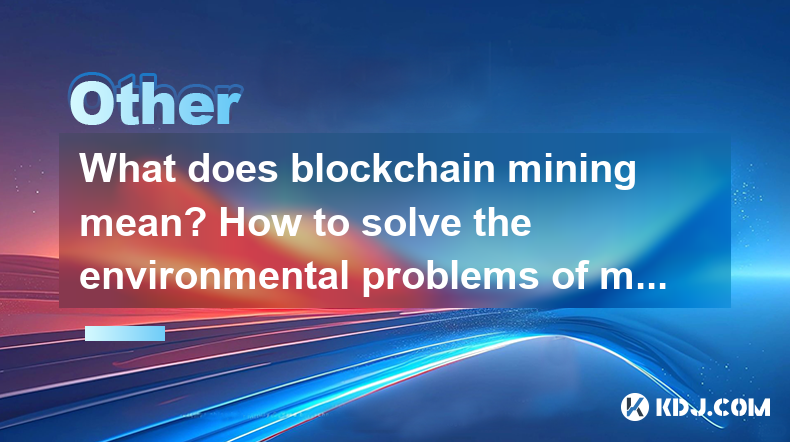
Blockchain mining is a crucial process in the world of cryptocurrencies, particularly for networks like Bitcoin and Ethereum. At its core, mining involves solving complex mathematical problems to validate transactions and add them to the blockchain. Miners use powerful computers to compete in solving these problems, and the first to solve it gets to add a new block to the chain and is rewarded with cryptocurrency. This process not only secures the network but also introduces new coins into circulation. The term "mining" is borrowed from the idea of extracting valuable resources, akin to how one might mine for gold.
The Mechanics of Blockchain Mining
Blockchain mining operates on a consensus mechanism known as Proof of Work (PoW). In PoW, miners compete to solve cryptographic puzzles, which requires significant computational power. Once a miner solves the puzzle, they broadcast the solution to the network, and other nodes verify the solution. If verified, the new block is added to the blockchain, and the miner receives the block reward. This reward is a combination of newly minted coins and transaction fees from the transactions included in the block. The difficulty of these puzzles adjusts periodically to maintain a consistent block time, ensuring the network's stability.
Environmental Impact of Mining
The environmental impact of blockchain mining is a significant concern due to its high energy consumption. Miners use specialized hardware, often in large data centers, which consume vast amounts of electricity. This energy use contributes to carbon emissions, especially when the electricity comes from non-renewable sources. The environmental footprint of mining has led to criticism and calls for more sustainable practices within the cryptocurrency industry. Addressing these concerns is crucial for the long-term viability and acceptance of cryptocurrencies.
Steps to Solve Environmental Problems of Mining
Switch to Renewable Energy Sources: One of the most effective ways to reduce the environmental impact of mining is to use renewable energy. Some mining operations have already started using solar, wind, or hydroelectric power to reduce their carbon footprint. This shift can significantly lower emissions and make mining more sustainable.
Improve Energy Efficiency: Another approach is to enhance the energy efficiency of mining hardware. Manufacturers are continually working on developing more efficient ASICs (Application-Specific Integrated Circuits) that consume less power while maintaining high performance. This can help reduce the overall energy demand of mining operations.
Implement Alternative Consensus Mechanisms: Moving away from PoW to less energy-intensive consensus mechanisms like Proof of Stake (PoS) can also mitigate environmental impact. In PoS, validators are chosen to create new blocks based on the number of coins they hold and are willing to "stake" as collateral, rather than on computational power. This significantly reduces energy consumption.
Regulation and Incentives: Governments and regulatory bodies can play a role by implementing policies that encourage sustainable mining practices. This could include tax incentives for miners using renewable energy or regulations that limit the use of non-renewable energy sources for mining.
Community and Industry Initiatives: The cryptocurrency community and industry can also drive change through collective action. Initiatives like the Crypto Climate Accord aim to make the entire cryptocurrency ecosystem carbon neutral by 2030. Such efforts can foster collaboration and innovation in reducing the environmental impact of mining.
The Role of Miners in the Blockchain Ecosystem
Miners play a vital role in maintaining the integrity and security of blockchain networks. By validating transactions and adding them to the blockchain, miners ensure that the network remains decentralized and resistant to fraud. The competitive nature of mining also incentivizes miners to invest in the latest technology, which can drive innovation in the field of cryptography and computing. However, the high energy consumption associated with mining has led to a push for more sustainable practices, which is essential for the long-term sustainability of the cryptocurrency ecosystem.
Technological Advances in Mining
Technological advancements have been pivotal in shaping the mining landscape. The evolution from CPU to GPU mining, and eventually to ASICs, has significantly increased the efficiency and speed of mining operations. These advancements have also led to the centralization of mining power, as only those with access to the latest technology can remain competitive. However, ongoing research into more energy-efficient mining hardware and alternative consensus mechanisms offers hope for a more sustainable future. Innovations like immersion cooling and the use of waste heat from mining operations for other purposes are also being explored to reduce the environmental impact.
Economic Aspects of Mining
The economics of mining are complex and influenced by several factors, including the price of the cryptocurrency being mined, the cost of electricity, and the efficiency of the mining hardware. Miners must carefully balance these factors to remain profitable. The high energy costs associated with mining can make it unprofitable during periods of low cryptocurrency prices. This economic pressure has led some miners to seek out regions with cheaper electricity, often in countries with abundant renewable energy resources. Understanding these economic dynamics is crucial for miners looking to sustain their operations in the long term.
The Future of Mining and Sustainability
The future of blockchain mining is likely to be shaped by a continued focus on sustainability. As awareness of the environmental impact of mining grows, there will be increasing pressure on the industry to adopt more eco-friendly practices. This could lead to a shift towards more energy-efficient consensus mechanisms and a greater reliance on renewable energy sources. Additionally, regulatory changes and industry initiatives will play a significant role in driving the transition to sustainable mining. The challenge for the cryptocurrency community will be to balance the need for security and decentralization with the imperative to reduce environmental impact.
Common Questions Related to Blockchain Mining and Environmental Solutions
Q: What is blockchain mining?
A: Blockchain mining is the process of validating transactions and adding them to the blockchain by solving complex mathematical problems. Miners compete to solve these problems, and the first to do so gets to add a new block to the chain and is rewarded with cryptocurrency.
Q: Why is mining important for blockchain networks?
A: Mining is crucial for maintaining the security and integrity of blockchain networks. It ensures that transactions are verified and added to the blockchain in a decentralized manner, preventing fraud and maintaining the network's stability.
Q: What are the environmental concerns associated with mining?
A: The primary environmental concern with mining is its high energy consumption, which contributes to carbon emissions, especially when the electricity used comes from non-renewable sources. This has led to criticism and calls for more sustainable practices within the cryptocurrency industry.
Q: How can the environmental impact of mining be reduced?
A: The environmental impact of mining can be reduced by switching to renewable energy sources, improving the energy efficiency of mining hardware, implementing alternative consensus mechanisms like Proof of Stake, and through regulation and community initiatives that promote sustainable practices.
Q: What is Proof of Work (PoW) and how does it relate to mining?
A: Proof of Work (PoW) is a consensus mechanism used in blockchain networks like Bitcoin, where miners compete to solve cryptographic puzzles. The first miner to solve the puzzle gets to add a new block to the blockchain and is rewarded with cryptocurrency. PoW is energy-intensive, contributing to the environmental concerns associated with mining.
Q: What is Proof of Stake (PoS) and how can it help with environmental issues?
A: Proof of Stake (PoS) is an alternative consensus mechanism where validators are chosen to create new blocks based on the number of coins they hold and are willing to "stake" as collateral. PoS is significantly less energy-intensive than PoW, making it a more environmentally friendly option for blockchain networks.
Q: Are there any initiatives aimed at making mining more sustainable?
A: Yes, there are several initiatives aimed at making mining more sustainable. The Crypto Climate Accord, for example, is an industry-led effort to make the entire cryptocurrency ecosystem carbon neutral by 2030. Additionally, many miners are exploring the use of renewable energy sources and more energy-efficient hardware to reduce their environmental impact.
Q: How do economic factors influence mining operations?
A: Economic factors such as the price of the cryptocurrency being mined, the cost of electricity, and the efficiency of the mining hardware all influence the profitability of mining operations. Miners must carefully balance these factors to remain profitable, often seeking out regions with cheaper electricity to reduce costs.
Q: What role do technological advancements play in mining?
A: Technological advancements have significantly increased the efficiency and speed of mining operations. The evolution from CPU to GPU and then to ASICs has driven innovation in the field, although it has also led to the centralization of mining power. Ongoing research into more energy-efficient hardware and alternative consensus mechanisms continues to shape the future of mining.
Q: How might the future of mining be influenced by sustainability concerns?
A: The future of mining is likely to be heavily influenced by sustainability concerns. There will be increasing pressure on the industry to adopt more eco-friendly practices, such as using renewable energy sources and implementing less energy-intensive consensus mechanisms. Regulatory changes and industry initiatives will also play a significant role in driving the transition to sustainable mining.
Disclaimer:info@kdj.com
The information provided is not trading advice. kdj.com does not assume any responsibility for any investments made based on the information provided in this article. Cryptocurrencies are highly volatile and it is highly recommended that you invest with caution after thorough research!
If you believe that the content used on this website infringes your copyright, please contact us immediately (info@kdj.com) and we will delete it promptly.
- Kaspa (KAS) Price Prediction Hints at Accumulation Before Potential Surge
- 2025-04-17 22:15:13
- FET Price Prediction: Artificial Superintelligence Alliance (FET) Cryptocurrency Rebounds 10%
- 2025-04-17 22:15:13
- U.S. President Donald Trump Slammed Fed Chair Jerome Powell
- 2025-04-17 22:15:12
- Running a laundromat can't be as "easy" as potential investors may believe it is
- 2025-04-17 22:15:12
- BlockDAG (BDAG) Presale Explosion and Mobile Mining Powerhouse
- 2025-04-17 22:05:12
- Solana (SOL) Price Prediction: Eyes on $180 as Structure Turns Bullish
- 2025-04-17 22:05:12
Related knowledge
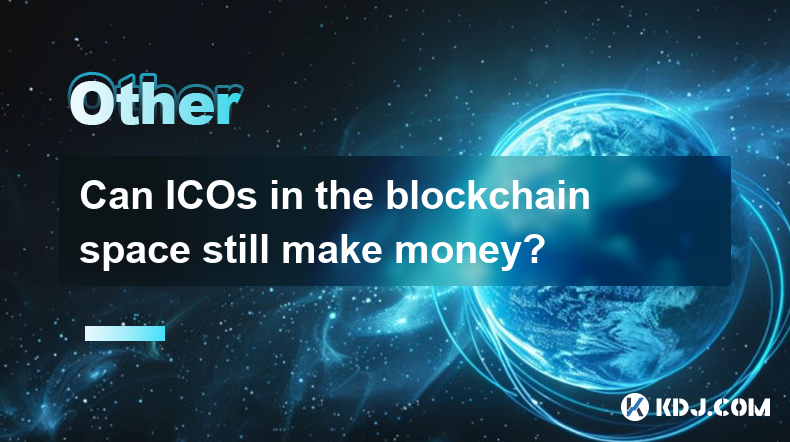
Can ICOs in the blockchain space still make money?
Apr 17,2025 at 08:29pm
The landscape of Initial Coin Offerings (ICOs) in the blockchain space has evolved significantly since their peak in 2017 and 2018. Despite the increased regulatory scrutiny and the rise of alternative fundraising methods like Security Token Offerings (STOs) and Initial Exchange Offerings (IEOs), ICOs can still be a viable way to raise funds and generat...

Can the application of blockchain in supply chain finance bring benefits?
Apr 15,2025 at 04:00pm
Can the application of blockchain in supply chain finance bring benefits? The integration of blockchain technology into supply chain finance has garnered significant attention in the cryptocurrency and financial sectors. This article explores how blockchain can potentially revolutionize supply chain finance, detailing its benefits and providing a compre...
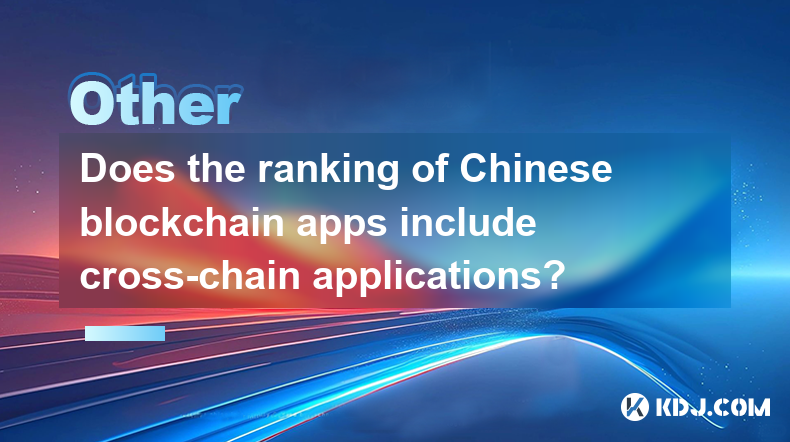
Does the ranking of Chinese blockchain apps include cross-chain applications?
Apr 14,2025 at 04:00pm
The ranking of Chinese blockchain apps is a comprehensive evaluation that takes into account various aspects such as user base, transaction volume, and technological innovation. A pertinent question arises regarding whether these rankings include cross-chain applications. Cross-chain applications, which allow different blockchain networks to interact an...
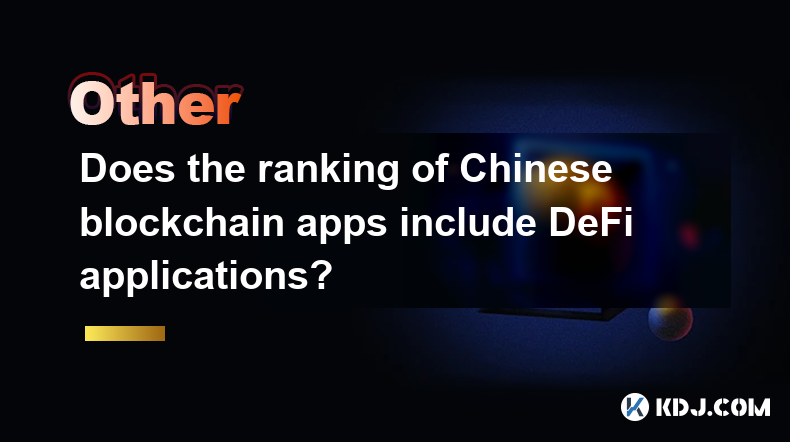
Does the ranking of Chinese blockchain apps include DeFi applications?
Apr 15,2025 at 06:57am
The ranking of Chinese blockchain apps is a comprehensive list that showcases the most popular and influential applications within the cryptocurrency ecosystem. One question that often arises is whether these rankings include DeFi applications. To answer this, we need to delve into the specifics of how these rankings are compiled and what types of appli...
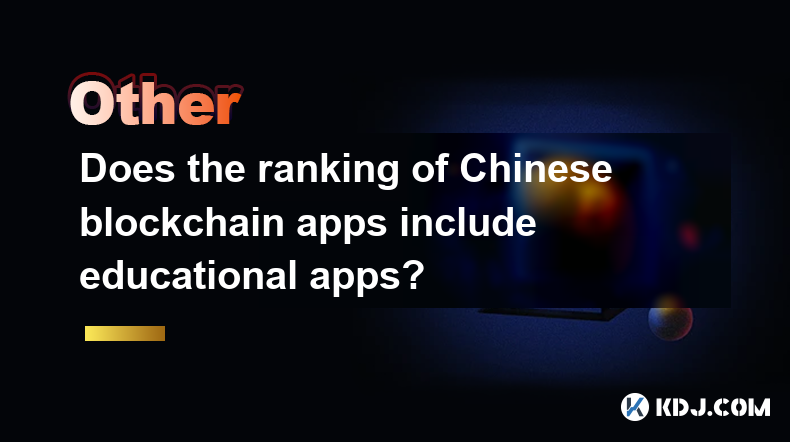
Does the ranking of Chinese blockchain apps include educational apps?
Apr 16,2025 at 03:35am
The ranking of Chinese blockchain apps often includes a variety of categories, from finance and gaming to social networking and beyond. One question that frequently arises is whether these rankings include educational apps. To address this, we need to delve into the specifics of how blockchain apps are categorized and ranked in China, and whether educat...
Does the ranking of Chinese blockchain apps include enterprise-level applications?
Apr 15,2025 at 06:42am
The ranking of Chinese blockchain apps often includes a variety of applications, ranging from consumer-focused to enterprise-level solutions. Understanding the scope and criteria for these rankings is essential to determine if enterprise-level applications are included. This article delves into the specifics of how Chinese blockchain app rankings are co...

Can ICOs in the blockchain space still make money?
Apr 17,2025 at 08:29pm
The landscape of Initial Coin Offerings (ICOs) in the blockchain space has evolved significantly since their peak in 2017 and 2018. Despite the increased regulatory scrutiny and the rise of alternative fundraising methods like Security Token Offerings (STOs) and Initial Exchange Offerings (IEOs), ICOs can still be a viable way to raise funds and generat...

Can the application of blockchain in supply chain finance bring benefits?
Apr 15,2025 at 04:00pm
Can the application of blockchain in supply chain finance bring benefits? The integration of blockchain technology into supply chain finance has garnered significant attention in the cryptocurrency and financial sectors. This article explores how blockchain can potentially revolutionize supply chain finance, detailing its benefits and providing a compre...

Does the ranking of Chinese blockchain apps include cross-chain applications?
Apr 14,2025 at 04:00pm
The ranking of Chinese blockchain apps is a comprehensive evaluation that takes into account various aspects such as user base, transaction volume, and technological innovation. A pertinent question arises regarding whether these rankings include cross-chain applications. Cross-chain applications, which allow different blockchain networks to interact an...

Does the ranking of Chinese blockchain apps include DeFi applications?
Apr 15,2025 at 06:57am
The ranking of Chinese blockchain apps is a comprehensive list that showcases the most popular and influential applications within the cryptocurrency ecosystem. One question that often arises is whether these rankings include DeFi applications. To answer this, we need to delve into the specifics of how these rankings are compiled and what types of appli...

Does the ranking of Chinese blockchain apps include educational apps?
Apr 16,2025 at 03:35am
The ranking of Chinese blockchain apps often includes a variety of categories, from finance and gaming to social networking and beyond. One question that frequently arises is whether these rankings include educational apps. To address this, we need to delve into the specifics of how blockchain apps are categorized and ranked in China, and whether educat...

Does the ranking of Chinese blockchain apps include enterprise-level applications?
Apr 15,2025 at 06:42am
The ranking of Chinese blockchain apps often includes a variety of applications, ranging from consumer-focused to enterprise-level solutions. Understanding the scope and criteria for these rankings is essential to determine if enterprise-level applications are included. This article delves into the specifics of how Chinese blockchain app rankings are co...
See all articles























































































